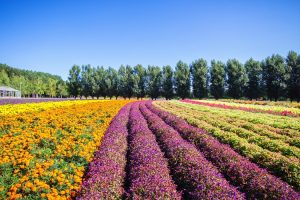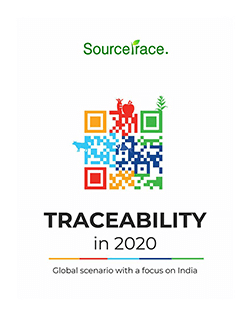Bringing in sustainability to Ethiopia’s booming floriculture industry

Flowers have the innate capacity to lift our feelings and enhance our mood – people all over the world realize this, and a bouquet of flowers becomes the chosen gift on many-an-occasion. Globalization and cultural exchanges have added to this trend – to the extent that flowers have been paired with events – like roses on Valentine’s and carnations on Mothers’ day. This increased use of flowers has given it a tag of luxury, made it a lifestyle product which has become a lucrative business; and its demand in the international market is rising.
What is floriculture?
The cultivation of such ornamental flowers is floriculture, which is a subset of horticulture. Floriculture can be defined as “a discipline of horticulture concerned with the cultivation of flowering and ornamental plants for gardens and for floristry, comprising the floral industry”. It can also be defined as “the segment of horticulture concerned with commercial production, marketing, and sale of bedding plants, cut flowers, potted plants, foliage plants, flower arrangements, and non-commercial home gardening”.
Ethiopia’s growing floriculture industry
The top flower producing countries in the world today are Netherlands, Israel, and Germany. Africa too is making the cut, in which Ethiopia is an upcoming flower producing country, following fast on the heels of Kenya, the largest flower producing country in Africa. Ethiopia has a suitable climate, proximity to Middle East and EU markets, and availability of cheap and abundant labour and a reliable transport system that supports the growth and expansion of the floriculture industry. And like many other developing nations, Ethiopia is taking this route to achieve rapid economic growth, diversify its export base and earn foreign exchange. This will help reduce its exposure to price volatility that typically occurs in international markets. The first floriculture companies emerged here in the early 1990s. With supportive policies of the government, Ethiopia attracted foreign investors in recent years for exporting cut flowers, mainly to European markets. Investors are attracted by an improved investment code, a five year tax holiday, duty-free import of machinery, easy access to bank loans and the availability of easy-to-train labour. Besides, the country is benefiting from this development through the creation of employment opportunity for unemployed citizens, directly or indirectly. More importantly, women account for 70 percent of the total workforce in these farms, mainly located in rural areas.
Recent data show that the country has allotted more than 3,491.04 hectares of land to floriculture. Currently, floriculture generates around 80 percent of Ethiopia’s earnings from horticulture. The export of cut flowers accounted for the majority of the revenue, with the sector generating 225 million USD. The level of production has made Ethiopia the sixth highest rose exporter in the world and the second in Africa. The floriculture industry also organized itself into an association called the Ethiopian Horticulture Producers and Exporters Association (EHPEA), which is helping the sector.
Any sector that is rapidly expanding eventually comes under a gamut of environmental concerns. There are concerns now, on whether this rapid economic growth of Ethiopia’s floriculture industry is at the expense of social well-being and environment. The international market does not have much knowledge of the conditions under which these flowers are cultivated, nor the methods. Tsegaye Abebe, Head of EHPEA, is aware of this concern and stated that
“When any new sector is introduced into a country, there are inevitably concerns about the impact of the sector on the local environment”.
Here’s a look into the environmental and social concerns.
Environmental and social concerns
Environmentalists have raised concerns in relation to the expansion of floriculture in Ethiopia such as the use of pesticides and chemical fertilizers, disposal of waste materials, and the protection of water bodies. According to environmentalists, the industry is using too much pesticide and chemical fertilizer, which damage the environment. According to them, the amount of pesticides and chemical fertilizer entering water bodies and damaging biodiversity is excessive. These excessive chemicals are killing useful organisms in the soil. In many cases, the choice of cultivation methods is inappropriate and has a negative impact on the environment. Also, a considerable amount of packaging waste is generated, causing pollution.
Social Concerns
The social concerns related to the temporary and seasonal nature of jobs, which amounts to casual labour. Long working hours and hazardous conditions are common too. The provision for health and safety has not been given due consideration. Besides, there is little or no research done about the environmental and social impact of the sector, even though the floriculture industry is booming in the country.
A regulatory system comes into place
All of these point to a need for a regulatory system, without which the industry can become a threat to the national environment. Also, nowadays there are a lot of international, regional and local environmental and social standards to adhere to. Ethiopia has also developed its own national code of practice based on other international norms and labels like EuroGAP and WHO standards. The government is also empowering regulatory offices to give due attention to adverse environmental impact, instead of going all out into an income generation mode at the expense of the environment.
Minimizing negative social and environmental impact
Environmental and social impact can be minimized by promoting integrated pest management and the use of environment-friendly agrochemicals by giving incentives to producers. Setting minimum wage norms and workable laws, revising pesticide application and control, and setting aside buffer zones will go a long way in ensuring minimal negative social and environmental impact. Sooner or later, the floriculture industry in Ethiopia to is bound to go the way many other sectors go, and then,
the introduction of certification systems and traceability solutions can be used to ensure adherence to international standards as it traverses a global supply chain.
SourceTrace's software solutions have been deployed across 37 countries and 4 continents already. We are on a mission to make agriculture and food systems more sustainable. Get in touch and we will extend our expertise and commitment to you.
Request a Demo


